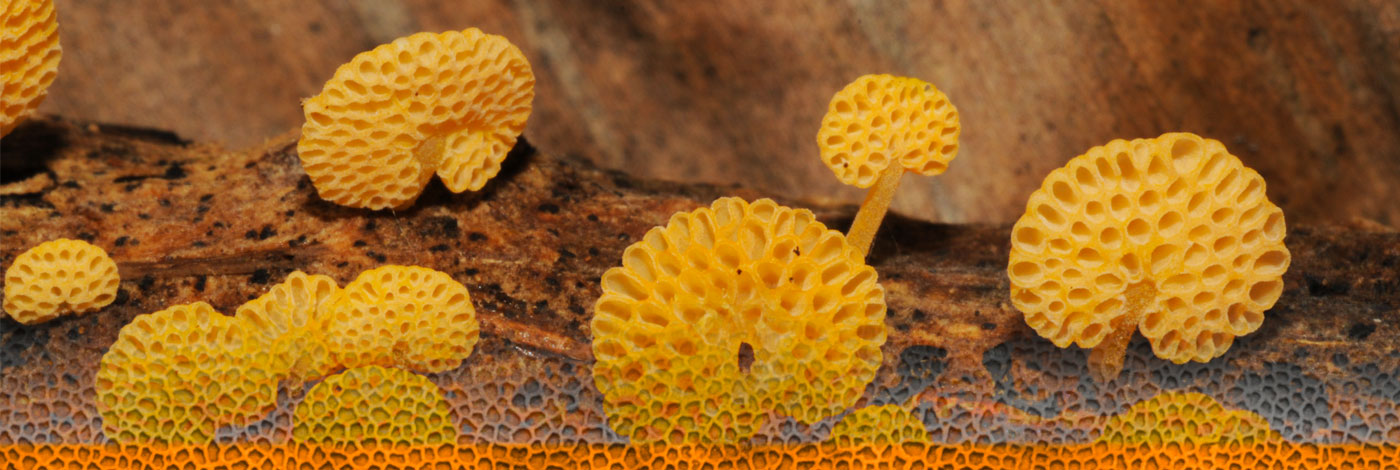
 Cryptogamie, Mycologie
29 (4) - Pages 365-388
Cryptogamie, Mycologie
29 (4) - Pages 365-388The present note is the first of a series surveying novel fungal taxa named before 1940 and with original localities in the arid Middle East region. The survey will consider members of the well represented taxonomic groups, i.e. non lichenized Ascomycetes, anamorphic fungi, Homo- and Hetero- Basidiomycetes. It is in line with published contributions on similar novelties being introduced in the period 1940-2000. These novelties were, however, dealt with following the nature of their original substrate, whether of telluric or of organic origin. Fortythree taxa were named from 1871 to 1940. Melogramma cylindrosporum from Syria was the first recorded fungus. As expected the rate of introduction was slow before 1900: 18.7% of the whole group, in comparison to the average rate/decade in the next forty years: 20.3%. But almost all post-1900 taxa were named in the years 1910-1930. Most taxa (37) were described as species, and fewer were considered varieties of known species; no new genera were proposed. Their protologues are due to a few mycologists active in France, Germany and Italy on material collected by European resident or travellers botanists. One third of the novel taxa was reported from Libya by A. Trotter, P.A. Saccardo and R. Parisi in a relatively short period from 1912-1928. Less than a third comes from the Nile Valley; it stems from efforts made by I. Reichert (1921) upon examination of Egyptian specimens housed at Berlin Botanical Herbarium. Protologues of most remaining taxa are due to F. Bubák in 1914; these relate to material collected by the 1910 Handel-Mazzetti expedition to the Orient. All the new organisms were associated with material of plant origin except Penicillium egyptiacum, described in 1933 from a culture isolated from soil. Hypomyces galericola and Nectria muscicola are unusual in being fungicolous or muscicolous. Updating of the relevant taxonomic positions stress 21 genera are represented. Three genera comprise about half of the group. Twelve taxa are in Pleospora sensu lato: in the past its generic limits had been widely conceived encompassing several other old genera presently undergoing taxonomic reconsideration. The small mycorrhizal genus Terfezia has five taxa from Egypt, Irak, Saudi Arabia and Syria. But the relatively large genus Mycosphaerella has only four units from Egypt, Libya and Irak. Remaining taxa either belong to Didymosphaeria, Glonium, Leptosphaeria and Rosellinia (2 taxa each) or to the 13 genera each having a single unit. The combinations Guignardia aegyptiaca (Müll. Arg.) Reichert and Amphisphaeria palmarum (Maffei) El-Buni & S.S. Rattan are not related to any mideastern new ascomycete. The two major pre-1940 regional reports by Bubák (1914) and Reichert (1921) also convey data on 18 known species simply observed in Egypt (16 taxa) and/or in Irak (4 taxa). Bubák's report provides in addition protologues of 12 new ascomycetes from Turkey, which we do not consider to be in the Middle East. The taxonomic positions of the new additions and of the Turkish novelties were also critically updated. These bring to 75 the total number of taxa considered. A large proportion of the pre-1940 novelties (81.3%) was introduced in the two decades 1910-1930. This activity was apparently not slackened by the first World War. The Syrian and Iraki names appeared in 1914, and the Libyan ones between 1912 and 1917. Egyptian taxa were proposed by Reichert in 1921 on material collected before 1914. The first World War apparently brought German interest in the biodiversity of the Middle East to an end. In the lapse between the two World Wars no new species from the Asian part of the region was described. Interest in the local fungi was then confined to Egypt with the appearance of native mycologists. Finally, a scrutiny of taxonomic information on ascomycetes named before World War II reveals several are still only known by their original short descriptions and/or their collecting sites. A regional survey of this major group of fungi needs to be resumed.